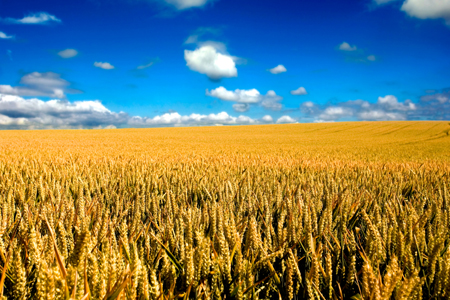 (Reuters) – Wheat crop prospects in Kansas, the top U.S. producer of the grain, are well above average as crop-saving rains last month should more than offset the impact of an earlier drought, scouts on an annual tour said on Thursday.
(Reuters) – Wheat crop prospects in Kansas, the top U.S. producer of the grain, are well above average as crop-saving rains last month should more than offset the impact of an earlier drought, scouts on an annual tour said on Thursday.
The scouts on the three-day Kansas wheat crop tour estimated the average yield at 48.6 bushels per acre, topping last year’s U.S. Department of Agriculture estimate of 37.0 bpa and a five-year Kansas tour average of 39.3 bpa.
If realized, the yield would trail only the record yields of 49 bpa in 1998, USDA data showed.
Tour organizer the Wheat Quality Council estimated Kansas wheat production at 382.4 million bushels, above USDA’s 2015 estimate of 321.9 million and a five-year tour average of 304.6 million. The crop would be the largest since the 2003 Kansas wheat harvest of 480 million bushels.
“We have very good yield potential. Farmers right now are hoping for cool, moist weather through the end of the growing season so that yield potential can be realized,” said Romulo Lollato, an extension wheat specialist at Kansas State University and tour scout.
The 2016 crop has the potential to be among the highest yielding ever, but fewer planted acres will keep a lid on overall production. Kansas farmers primarily grow hard red winter wheat, the largest class of U.S. wheat which is milled into bread flour.
More than 80 crop scouts, including millers, food makers, traders, academics and media, were on the tour, checking 655 farm fields.
The crop was planted in mostly favorable conditions after good precipitation bolstered soil moisture last autumn. But crops suffered under dry weather from November to April, stunting growth in southwest Kansas and clipping grain potential in other areas of the state.
A rainy April brought much needed moisture, but increased the threat of fungal diseases such as stripe rust, which was found in several fields surveyed by crop scouts. Fungicide sprayers were a common sight during the tour, particularly along the state’s southern border.
Scouts also noted instances of the viral diseases barley yellow dwarf and wheat streak mosaic in some fields.
“Things look really good and what we really need now is for disease to stay in check,” said Gary Millershaski, a western Kansas farmer. “I do not count my eggs before they hatch. But right now, there are a lot of eggs in the basket,” he said.




